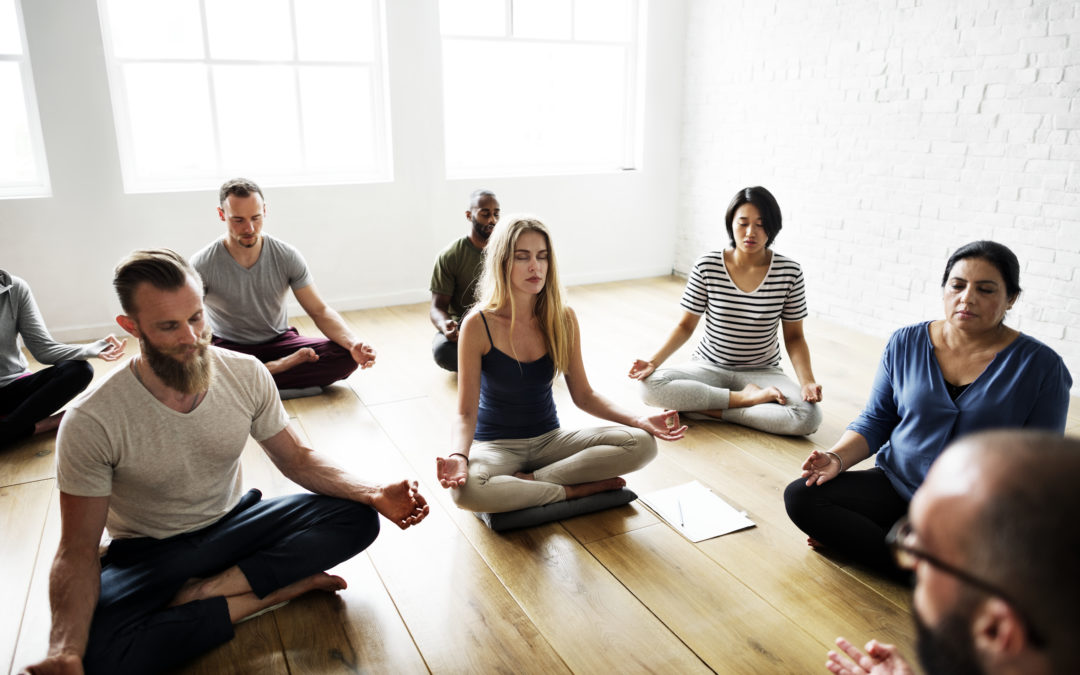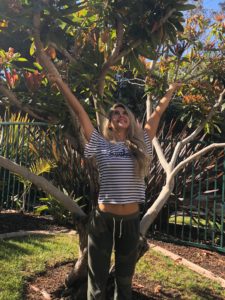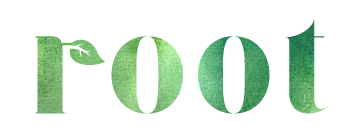
4 Ways to Heal During Your Next Group Yoga Class

Group classes are awesome for yogis of all levels and intentions and most teachers provide a general teaching style to address the ranges of needs.
Unlike group classes, yoga therapy puts the individual at the center and it’s all about the person’s specific need to heal the mind, body and spirit. Each session is private (or at most a small focused group of 3-4 people) and targeted to address a goal like reducing stress, managing anxiety, breathing better or easing chronic pain.
As a Yoga Therapist, some of my clients have practiced yoga for years, yet are only able to heal their anxiety, depression, stress or back pain (to name a few), through our one-on-one work.
But what if you’re ready for a more healing yoga practice but not quite ready to see a Yoga Therapist? Have no fear, there are a few ways you can turn up the healing in a large group setting. Check our list of simple ways to approach your next group class for a more therapeutic and personalized experience.
Before the class
- Decide what needs attention: Before the class starts, I always encourage my clients and students to take a mental inventory. Notice what’s showing up for you (sensations, emotions, energy, etc). What’s been bothering you or what would you like to explore? Take a few minutes to check in with yourself and observe what feels tight or contentious. Also, take notice of what feels good and at ease. Maybe you’re having shoulder pain or work has been extra stressful. Maybe your feeling a sense of relief or your feet feel relaxed. Then, based on your self discoveries, set an intention to support whatever it is you are needing that week, day or in that moment.
- Commit: Whatever you picked from the above exercise, commit that as your “healing intention” for the rest of the class. For me, I’m always working on ways to manage my anxiety and often notice anxious tension in my body each time I go through my personal inventory. Because this is a reoccurring theme, this month I decided to focus on my relationship to fear and worry throughout my practice.
During the class
- Remember that healing intention: It’s pretty much guaranteed that while you’ll be “in the flow” the chit chatter of the mind will start to creep in. “Shoot, did I return that email?”, “What am I going to have for dinner tonight?” Don’t worry this is natural and you’re not alone. It’s simply your subconscious mind and its tendency to pull you away from the present moment. Lucky for you, you set your healing intention before the class so you’ll tap into this in these moments.
- Slow down your movements: Be aware of the transitions coming in and out of poses just as much as you are aware of the alignment in the pose itself. Notice what your movement patterns are and see if you can offer something different to keep things fresh and supporting your intention.
- Close your eyes: If comfortable, close your eyes as you move through a salutation or while holding a more familiar pose like Warrior II. This encourages the attention to continue to move inward and also invites in space to let go of judgment and just be with what is.
- Honor your body and your energy level: Modify poses, skip vinyasas, or drop into child’s pose at anytime. Remember, you set a healing intention and need to honor it so be patient and compassionate. Do not judge yourself for these choices! There is no “good” or “bad” in the healing process, there is just what you need.
- Keep your eyes on your mat: Remember, this class is all about you and your healing intention, so let’s keep it that way. It’s easy to get caught up in what your neighbors are doing and follow their lead. However, when we focus on mimicking someone else’s practice with lose the authenticity of our own.
After the class / in between classes
- Meditate on your healing intention – Before the class closes off, take a moment to come back to your healing intention and notice how it now feels in your body. Observe the impact your practice has had. Is the pain or fear better or worse? Has it moved? Maybe it’s the same? Are you more at ease? Whatever you’re noticing, know that this is your perfect experience.
As you move about life, explore integrating this type of reflection and awareness into your daily routine frequently reminding yourself of your intentions to heal.
Yoga is an individual practice, even when you’re surrounded by people on and off the mat. I hope these steps invite you to make your practice and little more you and allow you to dive deeper into your healing needs.
Do you have other tips for taking your practice to the next level? Share with us below!

Recent Comments